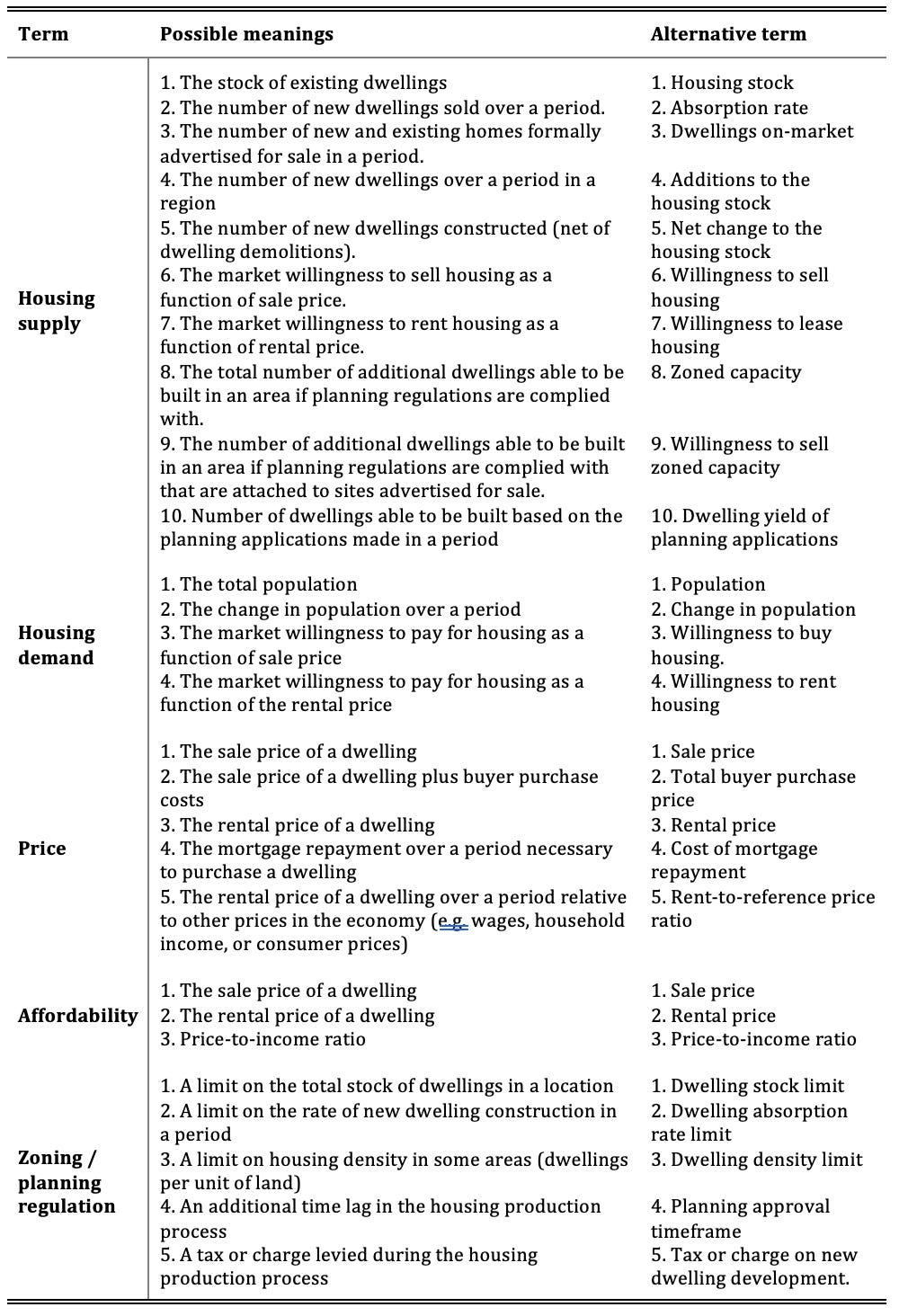Alice in housing economics wonderland
We cannot have a productive conversation about housing when we use words to mean whatever we choose them to mean, especially the word "supply"
“When I use a word,” Humpty Dumpty said in rather a scornful tone, “it means just what I choose it to mean — neither more nor less.”
’The question is,” said Alice, “whether you can make words mean so many different things.”
― Lewis Carroll, Through the Looking Glass
An increasing academic and policy focus on housing supply has unfortunately not brought with it an increase in clarity over the meaning of words. Words like housing supply, demand, zoning, price and affordability, have come to mean whatever the authors want them to mean.
This is unhelpful.
I've put together in the below table various potential meanings of these catch-all economic terms, and the words I think we should use instead to increase clarity.
For example, economists should be crystal clear that the economic price of housing is the market rental price (i.e. the price that measures the amount of good and services given up to get that good). The sale price of a dwelling is merely the market’s judgement of the asset value of buying a rental income stream in perpetuity and is heavily affected by prevailing interest rates (capitalisation rates), land and property taxes, and expectations of changes to the asset value (capital gains expectations).
With such a variety of definitions, what can the phrase “an increase in the supply of dwellings relative to demand will reduce dwelling prices” actually mean?
The obvious and strictly true definition is when the terms mean
supply → market willingness to sell housing in this period,
demand → market willingness to pay for housing in this period, and
price → the sale price of a dwelling in this period.
This merely describes asset market bid and offer schedules. When there is a "supply shift" in these schedules that massively reduces prices, we call that a market crash (a topic that is also poorly understood). But the economics of housing stock change is more sophisticated than this.
Supply and demand might also mean number of dwellings and total population—completely different ideas from bid and offer schedules in asset markets, instead focussed on material quantities that are expected to move together.
Sometimes supply is used to mean zoned capacity (how much can build built within current zoning rules) and is often assumed to be synonymous with the absorption rate (how quickly the market will develop new housing subject to asset market conditions). Changing zoned capacity does not necessary change the absorption rate, yet they are often described as one and the same thing.
Perhaps if we could describe what we mean more specifically we can start to allow the evidence to support or disprove theories about how the housing and property market operates.
I'm open to improving and expanding the table with better, or more widely used, terminology and will update and refine it over time.


